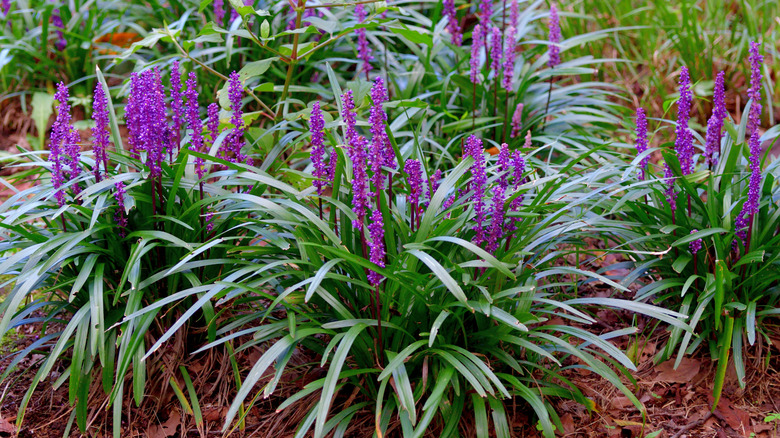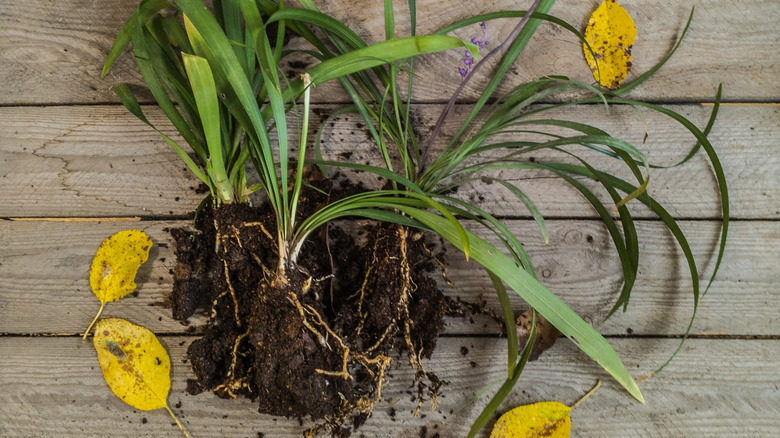Downsides To Monkey Grass You Shouldn't Overlook
For low-maintenance gardens, monkey grass (Liriope muscari) has been a popular choice thanks to its attractive, grass-like foliage and pretty purple flower spikes. This is one clumping plant that can handle either full sun or partial shade and is also drought-tolerant and resistant to deer defoliation. In fact, it's a fast-growing ground cover that will add beautiful color to your yard. So what's not to love about this plant? Unfortunately, the most notable downside to growing monkey grass in your garden is its fairly aggressive growth habit. Any plant that spreads aggressively and is not controlled does have the danger of becoming invasive.
Monkey grass has a fleshy or tuberous root system that allows each clump to spread to a width of around 1.5 feet or even wider. It does this by producing suckers at the base of each plant. Even though monkey grass is not included on any national invasive plant lists, it is now regarded as an invasive species in the states of Georgia and South Carolina. Plus, according to the University of Florida Extension, this variety is considered to have a high invasion risk and is no longer recommended as a suitable plant for Florida gardens.
So, if you're growing Liriope muscari in your yard, you'll need to control its growth or consider a better alternative, such as mondo grass (Ophiopogon spp.). You'll find that you can easily cover ugly tree roots with this easy-to-grow landscaping stunner because it will do well in shady areas of your garden.
How to manage the growth of monkey grass
If Liriope muscari is happily thriving in your garden, you want to keep an eye on it to make sure it remains contained to the area you want it to grow. It's recommended that you prune this species in late winter to remove old leaves and dead foliage. Your monkey grass can even be mowed, as this will invigorate the plant with luscious new growth. If you're going to do this, set your mower at the highest level to avoid scalping the plant. Monkey grass can also be dug up and divided. This practice should keep your clumps at a more manageable level and is one of the better ways to control their growth. Although the perfect time to divide your ornamental grasses can vary, monkey grass is best done in early spring.
You could also consider installing a physical barrier, like a metal edging, that you bury in the ground around your plants. As these ground covers are clumping, the edging should effectively help contain the spread of the fleshy roots. But if you want to remove the plant altogether, the best way is just to dig it out, making sure that you get as many of the tuberous roots as you can. Undoubtedly, some roots will be missed, so you'll have to monitor the area and spray any new plants that pop up with a herbicide designed for broadleaf weeds. This monitoring might have to be ongoing for at least a couple of seasons.

